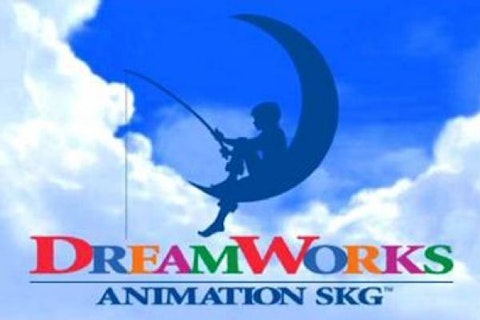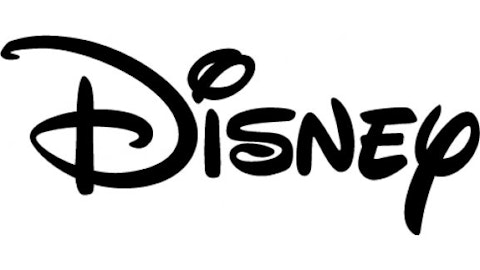Dream for Dreamworks Animation Skg Inc (NASDAQ:DWA) has been a bit of a disappointment lately. The company delayed an upcoming film, and news that the company may lay off 500 employees was leaked to the press. However, before we considering shorting this stock in tandem with the deluge of analyst downgrades, we need to consider the fundamental strengths of the company as well. Is DreamWorks’ future nothing but a pipe dream, or will it survive and thrive, evolving into a much stronger animation studio?

DreamWorks Animation was once a business segment of DreamWorks Studios, the entertainment company formed by the Hollywood triumvirate of Steven Spielberg, Jeffrey Katzenberg and David Geffen. DreamWorks Animation was spun off in October 2004 to oversee its profitable computer-generated animation franchises — which now include Shrek, Madagascar, Kung Fu Panda and Puss in Boots.
Since its market debut, however, the stock has lost 57% of its value, due to increased competition from The Walt Disney Company (NYSE:DIS)’s Pixar Studios, which created Toy Story, and News Corp (NASDAQ:NWS).’s Blue Sky Studios, the creators of Ice Age.
As a standalone animation studio, how does DreamWorks’ revenue and earnings growth compare to its much larger competitors?


DWA Revenue & EPS Diluted TTM data by YCharts
DreamWorks woefully underperforms these media giants by a wide margin, despite releasing similar computer-generated films. The difference is business segment diversification, which we will discuss below.
Livin’ the Dream
DreamWorks is still an undeniable force in modern animation. Let’s take a look at the 10 most profitable CG (computer generated) films ever made, with their domestic revenue adjusted for inflation.
| Film | Studio/Year | Domestic Gross |
| Shrek 2 | DreamWorks, 2004 | $564.1 million |
| Finding Nemo | Pixar, 2003 | $447.3 million |
| Toy Story 3 | Pixar, 2010 | $414.5 million |
| Toy Story 2 | Pixar, 1999 | $379.8 million |
| Shrek | DreamWorks, 2001 | $375.5 million |
| Shrek the Third | DreamWorks, 2007 | $372.4 million |
| Monsters, Inc. | Pixar, 2001 | $358.0 million |
| Toy Story | Pixar, 1995 | $348.4 million |
| The Incredibles | Pixar, 2004 | $333.7 million |
| Up | Pixar, 2009 | $311.8 million |
Source: Seeking Alpha
Although Pixar dominates this list, DreamWorks puts up a good fight claiming three of the top spots with a single franchise.
Therein lies the problem — although DreamWorks was able to milk the green ogre’s franchise for nearly a decade, the company realized that diminishing returns had finally arrived with Shrek Forever After, which grossed $238.4 million — 64% of its predecessor, Shrek the Third.
While DreamWorks has had success with Kung Fu Panda and Madagascar, neither film nor their sequels have been able to measure up to Shrek’s profitability.
Do we put two or three eggs in the basket?
Going forward, this puts DreamWorks at a major disadvantage versus its media industry peers. The company, with all its eggs in a basket, is simply not diversified enough to absorb box office bombs and delayed releases.
While Disney, News Corp., or Time Warner Inc. (NYSE:TWX) can easily use gains from other divisions, such as content providing networks, to offset studio losses, DreamWorks has no such cushion. For example, the lackluster opening of DreamWorks’ Rise of the Guardians last fall, which opened at $23.8 million, immediately caused its stock to tumble 5% the following Monday.
In response, the company is accelerating its release schedule, aiming to release three annual films instead of two between 2013 and 2016. While offering an additional film may stabilize revenue and earnings slightly, each release is still a big gamble for the studio.
In 2013, DreamWorks originally planned to take a risk and release three original titles: The Croods, Turbo and Mr. Peabody and Sherman — which are not connected to any of its existing high-grossing franchises. However, it recently announced that it would delay Mr. Peabody and Sherman — which is about a time-traveling boy genius and his dog — by four months, releasing only two films in 2013, and pushing back the film’s potential profits into 2014. This single delay prompted several downgrades from analysts.
In 2014, it plans to release another original title, Me and My Shadow, as well as sequels to How to Train Your Dragon and The Penguins of Madagascar.
Recent reports that DreamWorks intends to layoff 500 employees exacerbated concerns. The cuts are expected to reduce the studio’s production, technology and overhead departments, according to The Hollywood Reporter.
The delayed releases and staff reductions all point to future problems in earnings and revenue growth.
Expansion and Opportunities
Looking forward, DreamWorks is keen on pursuing other sources of revenue outside of its core studio segment.
DreamWorks recently acquired Classic Media, a holdings company that owns classic cartoon characters such as He-Man, Gumby, Felix the Cat and Casper the Ghost. This $158 million acquisition considerably strengthens DreamWorks’ existing stable of characters, giving it a lot more intellectual properties to experiment with in feature films and other properties.
DreamWorks is expanding into China as well, through a media joint venture, “Oriental DreamWorks.” The studio intends to use this partnership as a platform to introduce more of its characters into China, and to open a theme park in Shanghai in 2016 to complement and compete with Disney’s upcoming Shanghai Disneyland.
The company plans to open its first domestic theme park in New Jersey in 2014. It will be the first amusement park to exclusively feature DreamWorks characters.
Bottom Line
DreamWorks is not a stable investment by any means. On one hand, the company’s attempts to diversify into new business segments and take chances on new intellectual properties is encouraging. On the other hand, the company’s business model is still extremely top heavy and completely dependent on its next box office hit.
Investors should also be aware that DreamWorks only has $130.71 million in cash, but is shouldering $200 million in debt. That makes future expansions — especially theme parks — a very risky venture.
I would advise investors to take a “wait and see” approach with DreamWorks — if the company can truly meet its own goal of releasing three quality films annually, as well as introduce new sources of revenue, then it could steadily evolve into a diversified giant. Otherwise, it’s just a very volatile cartoon stock.
The article Is Stability a Pipe Dream for DreamWorks Animation? originally appeared on Fool.com and is written by Leo Sun.
Copyright © 1995 – 2013 The Motley Fool, LLC. All rights reserved. The Motley Fool has a disclosure policy.



